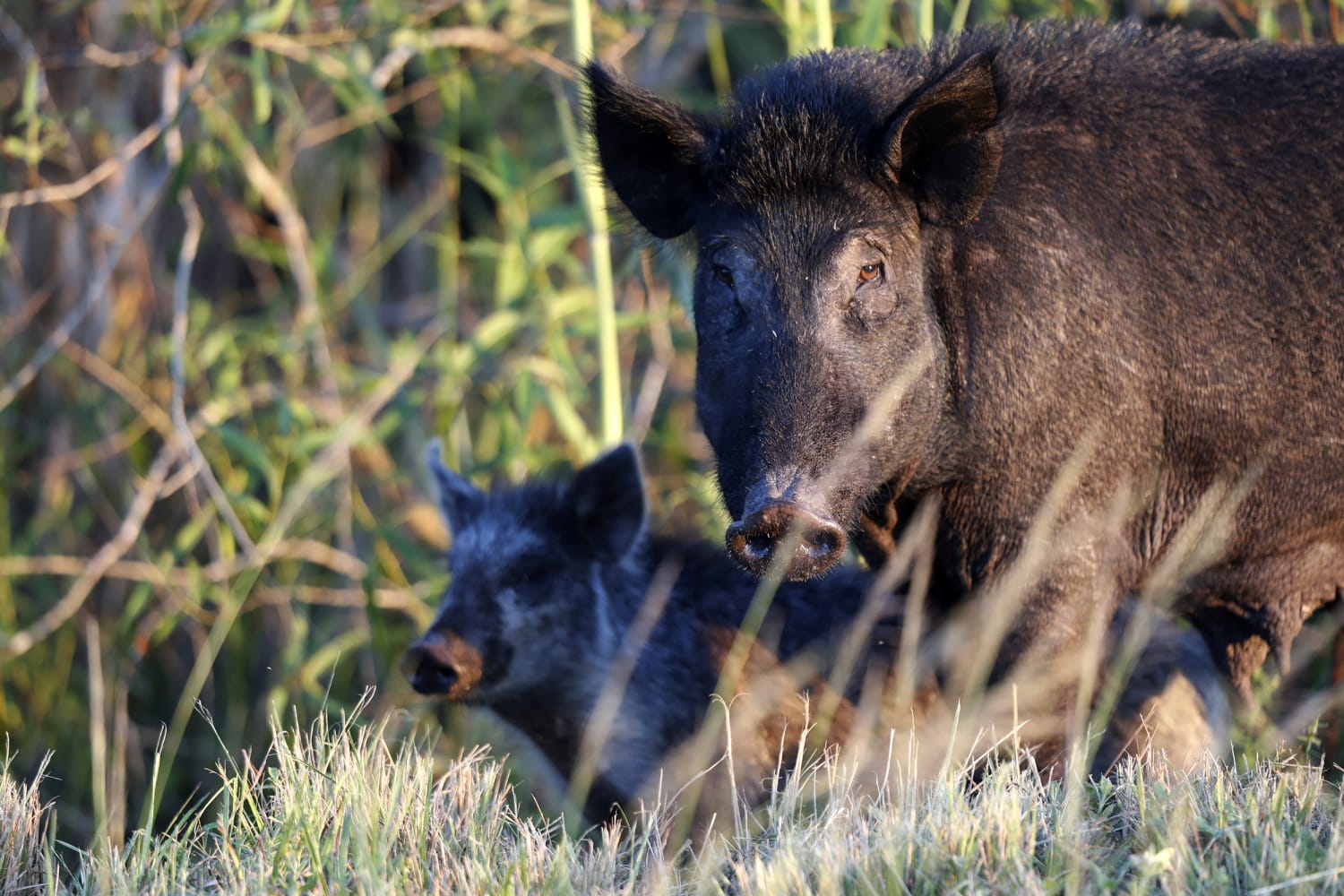
The San Francisco Bay Area has more than half a dozen beautiful public gardens that provide homes for thousands of species of plants and places for people to relax and connect with nature – as long as roving bands of wild pigs don’t destroy them first. It’s a problem not limited to California; invasive wild pigs have been seen in 39 states.
Wild pigs don’t just dig up flower gardens; they also tear up fields of corn, cotton and rice. Estimates of the damage they cause in the U.S. range from $1.5 billion to $2.5 billion every year.
Authorities have erected fences to protect certain areas from the porkers and hired trappers to eliminate them, while a bill introduced last month in California’s Legislature would make it easier for hunters to take them as game: Instead of charging a $25 fee for each pig killed, hunters would need just a $15 annual permit to hunt as many wild pigs as they wanted.
California’s proposed law hopes to enlist hunters in solving the problem, but it’s likely that some irresponsible hunters are actually to blame for the new colonies of feral pigs. Despite this, the proposed law is still a good way to encourage responsible hunters to play a role in stopping the spread of an invasive species and maybe even eradicating it from an area entirely.
The animal version of runaway rototillers, invasive wild pigs (also known as razorbacks or feral swine) have already destroyed soccer fields and residential yards in the Bay Area. And that’s just an annoyance compared to the harm they cause to agriculture, ecosystems and possibly even human health. Wild pigs don’t just dig up flower gardens; they also tear up fields of corn, cotton and rice. Estimates of the damage they cause in the U.S. range from $1.5 billion to $2.5 billion every year.
And as an invasive species, they harm native species by taking food and habitat away from them, while their habit of wallowing in water causes erosion on stream banks. To make things worse, wild pigs can transmit pathogens like salmonella and E. coli to whatever is downstream, including people.
Wild pigs have been damaging ecosystems in the New World for centuries. The first wild boars in what would become the continental U.S. were pigs that escaped from the farms of Spanish colonists in southeastern North America in the 16th century. More were brought by European settlers to the Western United States in the 18th century, and wild boars from Eurasia were intentionally released in the 20th century as a game animal.
Those earlier animal enthusiasts might not have realized the damage they were doing. But more recently, irresponsible hunters who intentionally moved captive pigs from one state to another may be behind several isolated populations that now exist hundreds of miles apart.
Centuries of coexistence with people in the Southeast in particular have made wild pigs seem a lot like any other animal that’s fun to hunt. Hunting wild pigs is serious enough business in the region that biologists working to get rid of the feral pigs have had their property damaged and have even received death threats. In this region, some (but by no means all) hunters stand in the way of progress.
But hunters can also be a vital asset in eliminating new colonies of feral pigs. My home state of Wisconsin has a long tradition of hunting, and when a population of wild pigs was identified in Crawford County in 2005, hunters quickly wiped them out. When it comes to wild pigs, Wisconsin encourages hunting them.
Hunters probably won’t be able to fully eliminate the pigs plaguing California. Hunting isn’t as popular as it is in Wisconsin, and feral swine are able to live in urban habitats poorly suited for hunting, meaning authorities will have to use other methods to completely eradicate the pig pests. These measures vary from the conventional (poisoned traps) to the unexpected (swine contraceptives).
It’s important that these new laws and eradication efforts are accompanied by public outreach to hunters and the general public about invasive species and why it’s important to get rid of them. That way hunters and nonhunters alike will know not just why they shouldn’t release feral pigs into the wild, but also how to alert authorities if they spot them. Everyone needs to be involved in saying, “Th-th-that’s all, folks,” to wild pigs.
Source: | This article originally belongs to Nbcnews.com









